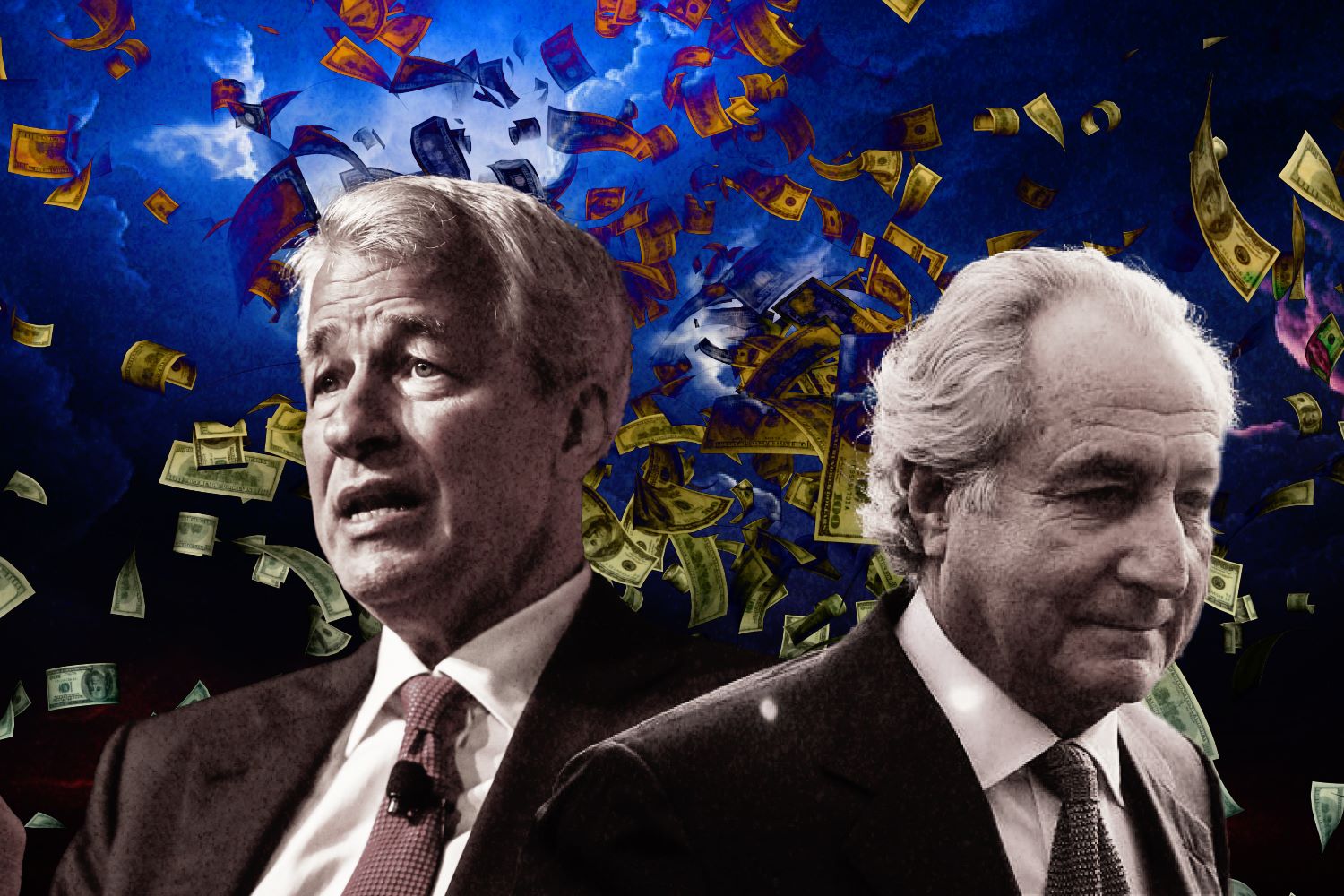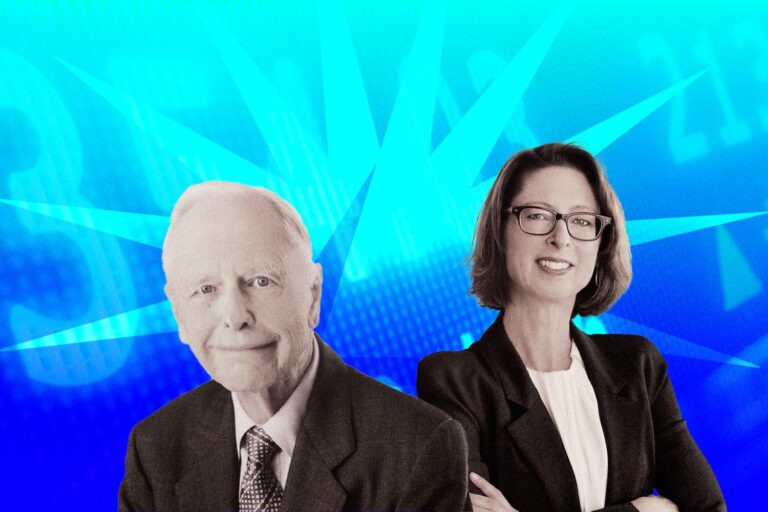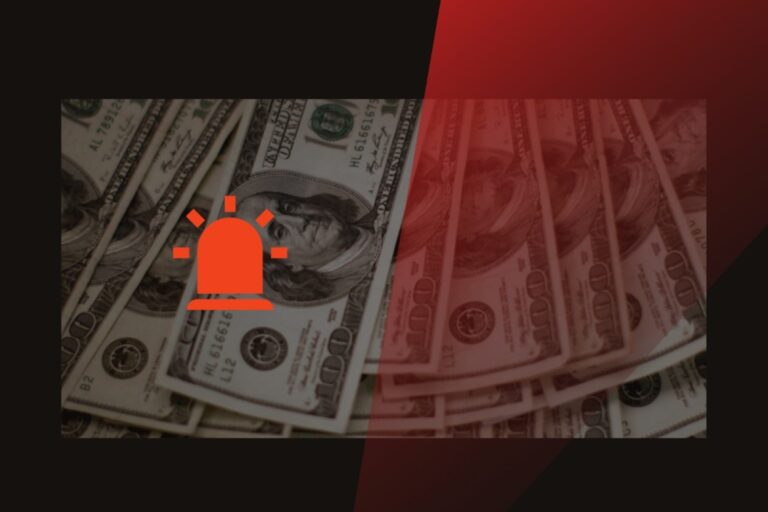Echoes of Misconduct: JPMorgan Chase’s Troubled Past and Its Repercussions
In modern finance, few names are as powerful and influential as JPMorgan Chase. With assets worth trillions of dollars, it is the largest bank in the United States. This giant’s reach spans continents, affecting markets worldwide.
Yet, behind the veneer of prosperity and success lies a narrative fraught with peril and controversy. For JPMorgan Chase, the journey to the summit of the financial world has been marked by a series of scandals, missteps, and ethical lapses that have cast a shadow over its storied legacy.
JPMorgan Chase: The Perils of Too Much Influence Over the Economy
JPMorgan holds assets totaling around three trillion dollars. This immense size and influence have led to concerns about whether the bank has become too big, potentially posing risks to the economy.
JPMorgan Chase’s roots can be traced back to 1799, with the founding of the Manhattan Company by Aaron Burr. Interestingly, the company was initially established to build a water supply system for New York City.
However, Burr used the extra funds to start a bank, which quickly became the company’s primary focus. By 1808, the Manhattan Company had sold its water business to the city, dedicating itself entirely to banking.

In 1955, the Manhattan Company merged with Chase National Bank, forming a significant part of what is now JPMorgan Chase. Chase National Bank was founded in 1877 and named in honor of Salmon P. Chase, who served as Secretary of the Treasury during the Civil War under President Abraham Lincoln and later as Chief Justice of the Supreme Court. Chase was also depicted on the $10,000 bill, a piece of official U.S. currency.
The other half of the bank’s name, J.P. Morgan, comes from another titan of American finance, J.P. Morgan himself. Morgan was instrumental in shaping the U.S. financial landscape in the late 19th and early 20th centuries. His influence extended far beyond banking, as he played a crucial role in stabilizing financial markets during economic crises and was a key figure in the establishment of major corporations and infrastructure projects.
JPMorgan Chase’s growth continued through a series of strategic mergers and acquisitions. Notable among these was the acquisition of Bank One Corporation in 2004, which significantly expanded its national presence.
Over the past two decades, quantitative easing (QE) has become a favored monetary policy for central banks worldwide, helping to keep economies strong amidst serious challenges. The 2007-08 global financial crisis and the subsequent “Great Recession” were major tests of this policy.
The Great Recession started when the interbank market froze. Retail banks, having operated with lax oversight on property lending, began to distrust each other’s solvency. The dramatic collapse in US retail bank lending triggered the bursting of the US housing bubble, sending economic shockwaves around the globe.
JPMorgan Chase played a significant role during this period. Amidst the chaos, JPMorgan Chase stepped in to acquire Bear Stearns and Washington Mutual in 2008, a move orchestrated with the support of the Federal Reserve to prevent further financial turmoil.
This extensive history of mergers and acquisitions has not only made JPMorgan Chase a dominant force in banking but also sparked concerns about its vast influence and the risks associated with its size. Critics argue that the bank’s immense scale makes it “too big to fail,” meaning that its collapse would have catastrophic implications for the global economy.
JPMorgan Chase’s Legal Battles and Settlements in Fraud Scandals
JPMorgan Chase’s involvement in major fraud scandals has left a lasting mark on its reputation and the financial industry as a whole. The bank’s participation in facilitating the deceptive practices of Enron, WorldCom, and Bernie Madoff’s Ponzi scheme underscores broader issues of corporate governance and ethical responsibility within the banking sector.
In the case of Enron, JPMorgan Chase’s alleged complicity in disguising loans to inflate the company’s financial health raises questions about the bank’s due diligence processes and its willingness to prioritize profits over integrity. Similarly, its failure to adequately vet WorldCom’s bonds before selling them to investors highlights systemic deficiencies in risk assessment and oversight.
In the aftermath of the WorldCom scandal, investors who had suffered substantial losses pursued legal action against JPMorgan Chase and other implicated parties. As a result, investors were misled into purchasing securities based on false financial information. This litigation culminated in a settlement in 2005, wherein JPMorgan Chase agreed to pay approximately $2 billion.

The Bernie Madoff scandal unveils another dimension of the bank’s ethical lapses, as its continued involvement with Madoff’s accounts despite suspicions of wrongdoing suggests a disregard for warning signs and a prioritization of short-term gains over long-term stability.
In 2011, even Bernie Madoff himself stated, ‘There were people at the bank who knew what was going on.’ His acknowledgment suggests complicity within JPMorgan Chase regarding his Ponzi scheme.
Despite suspicions surrounding Madoff’s activities, the bank continued to maintain accounts linked to him. This further raises questions about the extent of the bank’s awareness and involvement in the fraudulent scheme.
In 2014, JPMorgan Chase agreed to pay $2.6 billion to the U.S. government and the victims of the fraud.
JPMorgan Chase’s Manipulation of LIBOR and Futures Markets Exposed
Moreover, JPMorgan Chase has faced scrutiny and legal action for its involvement in market manipulation scandals, including the manipulation of the London Interbank Offered Rate (LIBOR) and futures markets.
The LIBOR Manipulation Scandal
JPMorgan Chase, among other major banks, has been implicated in the London Interbank Offered Rate (LIBOR) manipulation scandal, one of the most significant financial frauds in recent history.
LIBOR serves as a benchmark for setting interest rates globally, influencing various financial products such as loans and mortgages.
The scandal revolved around allegations that banks colluded to provide false information to manipulate LIBOR rates in their favor. This manipulation had far-reaching implications, affecting individuals and institutions worldwide who relied on accurate interest rate benchmarks.
JPMorgan Chase’s potential involvement in the LIBOR manipulation scheme spanned from 2003 until its exposure in 2012. During this period, the bank, along with others, allegedly provided misinformation that distorted LIBOR rates, artificially inflating or deflating them to benefit their trading positions.

The impact of the LIBOR manipulation scandal was profound, affecting anyone who had taken out loans or engaged in financial transactions tied to LIBOR during the implicated years. Borrowers may have unknowingly paid higher interest rates than they should have, resulting in significant financial losses.
The consequences of JPMorgan Chase’s alleged involvement in the LIBOR manipulation scandal were not limited to financial losses for individuals and institutions. The scandal also prompted legal action, with JPMorgan Chase and other implicated banks facing lawsuits and regulatory scrutiny.
In 2012, JPMorgan Chase, along with Citigroup and other banks, settled a lawsuit related to the LIBOR manipulation scandal for a total of $182 million.
JPMorgan’s $920 Million Settlement for Manipulating Precious Metals and Treasury Markets
The Commodity Futures Trading Commission (CFTC) has issued a landmark order against JPMorgan Chase & Company (JPMC & Co.) and its subsidiaries, JPMorgan Chase Bank, N.A., and J.P. Morgan Securities LLC (JPMS) for engaging in manipulative and deceptive conduct related to spoofing.
The misconduct spanned over eight years and involved hundreds of thousands of spoof orders in precious metals and U.S. Treasury futures contracts across various exchanges, including the Commodity Exchange, Inc., the New York Mercantile Exchange, and the Chicago Board of Trade.
The order concludes that JPM’s illicit trading activities significantly advantaged the firm while causing harm to other market participants. As a result, JPM has been directed to pay a total of $920.2 million in monetary relief, marking the highest restitution ($311,737,008), disgorgement ($172,034,790), and civil monetary penalty ($436,431,811) amounts ever imposed by the CFTC in a spoofing case.
CFTC Chairman Heath P. Tarbert emphasized, “Spoofing is illegal—pure and simple. This record-setting enforcement action demonstrates the CFTC’s commitment to being tough on those who intentionally break our rules, no matter who they are. Attempts to manipulate our markets won’t be tolerated. The CFTC will take all steps necessary to investigate and prosecute illegal activities that could ultimately undermine the integrity of the American free enterprise system.”
James McDonald, Director of the Division of Enforcement, echoed this sentiment, stating, “This action sends the important message that if you engage in manipulative and deceptive trade practices, you will be caught, punished, and forced to give up your ill-gotten gains. The CFTC is committed to working with our law enforcement and regulatory partners to eradicate this unlawful activity and to hold those responsible fully accountable.”
The consequences of JPMorgan Chase’s alleged manipulation of futures markets extend beyond financial penalties. Such actions can distort market efficiency, undermine investor confidence, and potentially harm the integrity of the financial system.
JPMorgan Chase’s Involvement in Mortgage Scandals
JPMorgan Chase has been embroiled in numerous scandals related to mortgages, particularly during the infamous housing bubble and subsequent financial crisis in the late 2000s. Alongside other major banks, JPMorgan Chase played a significant role in the proliferation of risky mortgages, bundling them into securities, and misleading investors about their stability.
The bank’s practices involved providing mortgages to individuals with questionable financial backgrounds, increasing the likelihood of default. These mortgages were then packaged into securities and sold to investors under false pretenses, leading to massive losses when the housing market collapsed.
In 2012, JPMorgan Chase, along with four other major banks, agreed to a landmark $26 billion settlement related to mortgage abuses. This settlement aimed to provide relief to homeowners affected by wrongful foreclosure practices and mortgage-related misconduct.
The following year, JPMorgan Chase faced another significant settlement, amounting to $13 billion, marking the largest settlement with a single entity in American history. This settlement addressed various allegations, including misrepresentation of mortgage-backed securities and other mortgage-related misconduct.
Beyond the financial crisis, JPMorgan Chase has faced allegations of mortgage abuses targeting specific groups. In 2011, the bank overcharged 6,000 active-duty military members for their mortgages and wrongfully foreclosed on 14 of them. This led to a multi-million dollar settlement to compensate the affected individuals.
In 2017, JPMorgan Chase faced accusations of racial discrimination in mortgage lending, with allegations that black and Hispanic individuals were charged higher rates compared to their white counterparts. Despite denying the allegations, the bank reached a multi-million dollar settlement to resolve the matter.
The London Whale: JPMorgan Chase’s Costly Bet Gone Wrong
The term “London Whale” may evoke images of a majestic sea creature, but in the world of finance, it refers to Bruno Iksil, a trader at JPMorgan Chase who made exceptionally large and risky bets, akin to a high-stakes gambler.
Iksil’s trades, particularly involving credit default swaps, ultimately led to staggering losses for the company, totaling around $6 billion.
The complexity of these trades makes them difficult to dissect, but the consequences were clear: JPMorgan Chase suffered significant financial losses, tarnishing its reputation and raising doubts about its risk management practices.

The sheer magnitude of the losses was unprecedented, and it shook investor confidence in the bank’s ability to manage risk effectively.
The fallout from the London Whale debacle extended beyond financial losses. JPMorgan Chase’s management faced intense scrutiny and criticism for allowing such risky bets to occur unchecked. The CEO at the time took a substantial pay cut in response to the scandal, signaling accountability at the highest levels of the company.
In addition to the financial and reputational damage, JPMorgan Chase incurred nearly $1 billion in fines related to the London Whale trade.
Troubled History with Credit Card Practices
Furthermore, JPMorgan Chase has faced a myriad of issues concerning its credit card practices, drawing scrutiny and legal action from customers and regulatory authorities alike.
In 2012, the bank found itself embroiled in a lawsuit filed by numerous customers who alleged that the bank unjustly raised their monthly minimum payments from two percent to five percent of their balance.
Customers claimed they were misled into transferring balances from other credit cards to their Chase card with promises of fixed rates until the balance was paid off. However, the sudden increase in minimum payments resulted in additional fees for customers. This peculiar case culminated in a $100 million settlement, highlighting the importance of transparency and accountability in credit card practices.
Another significant issue arose between 2005 and 2012 when JPMorgan Chase automatically charged cardholders for credit monitoring services without their consent, and in many cases, failed to provide the services as promised.
In 2013, the bank was ordered to refund $300 million to affected customers and pay $80 million in fines, underscoring the importance of respecting consumer rights and adhering to regulatory standards.
In 2015, JPMorgan Chase faced yet another controversy affecting over 100,000 cardholders. The bank was accused of employing illegal debt collection practices, further tarnishing its reputation and raising concerns about its compliance with consumer protection laws.








